Stefan Bassing produces furniture from combinations of identical steel rods
Designer and Bartlett School of Architecture tutor Stefan Bassing has used digital modelling to create a pair of tables, made from repetitive elements to simplify the production process.
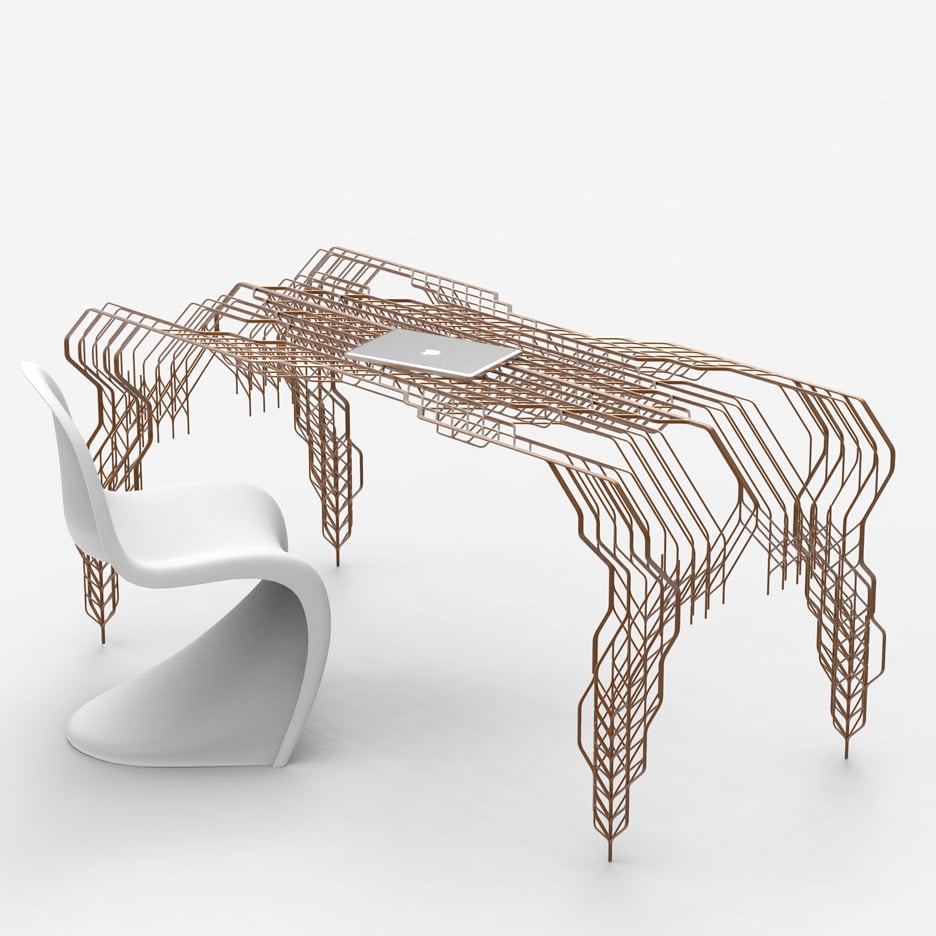
The Table No 1 and No 2 pieces comprise clusters of bent steel tubes, which form flat surfaces and spindly legs.
Bassing created each table by first designing a single component – for example a perpendicular rod – which was then used as a "seed" to algorithmically generate a set of elements that could be used to build the furniture.
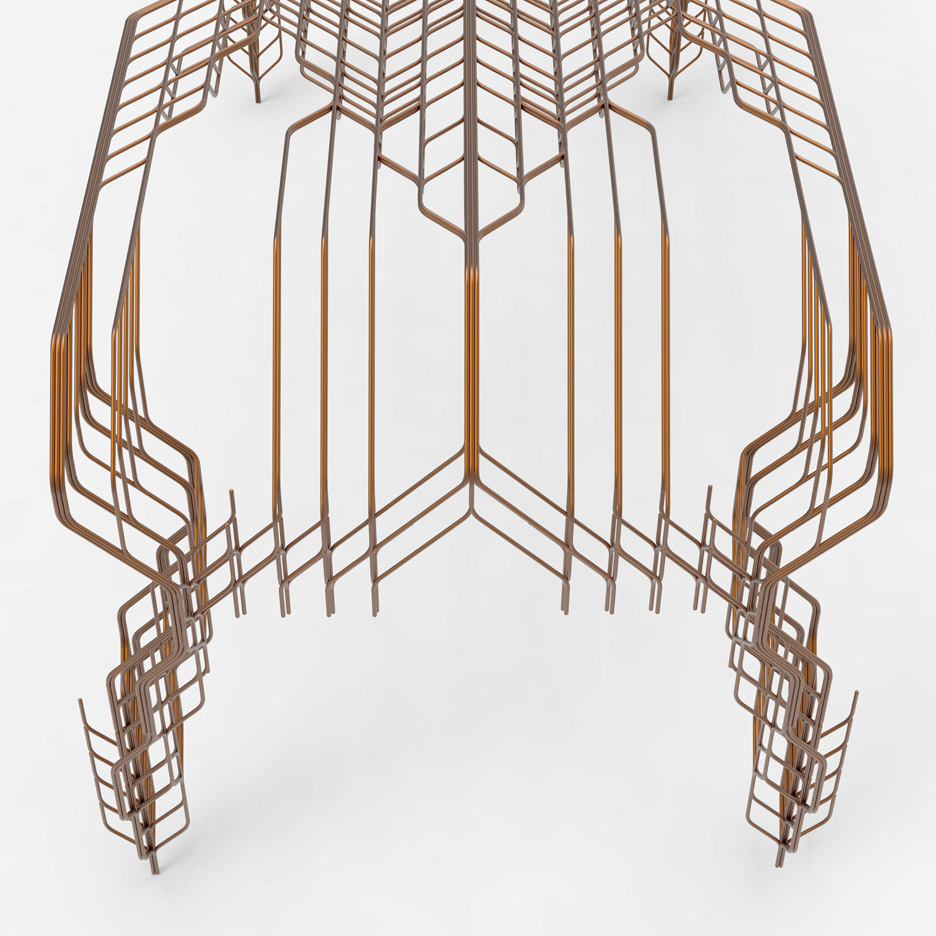
The process is intended to create a more economical production process, allowing the same element be re-used alongside a small number of unique parts.
"In combination these elements create a rich design language in structure such as branches, bundles, surfaces and the transitions in between, accommodating multiple function of the table's leg and its top," said Bassing.
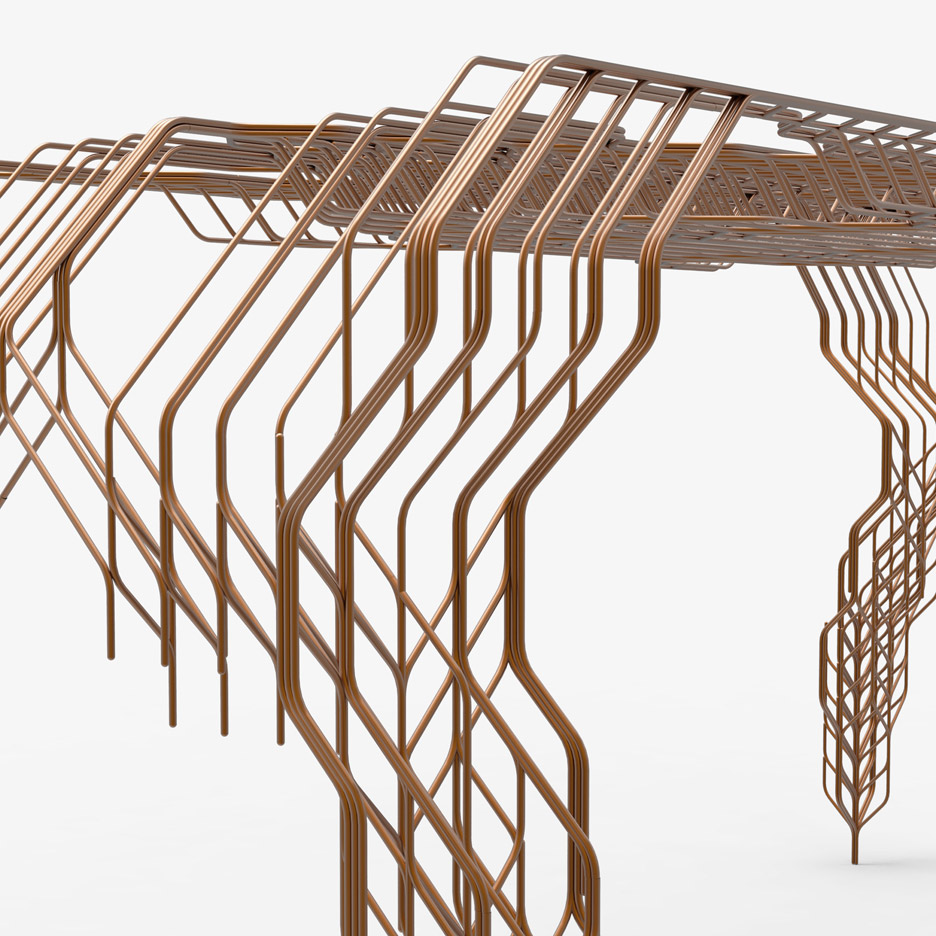
"The concept derives from the investigation into space frame structures appearing in architecture, and their reinterpretation and evolution through digital design tools, bringing the design sketches to realisation on a furniture scale," he added.
After the furniture is created as a digital model, a computer numerically controlled (CNC) bending machine could be used to convert steel rods into parts for use. These would then be assembled by a craftsperson, before being copper plated.
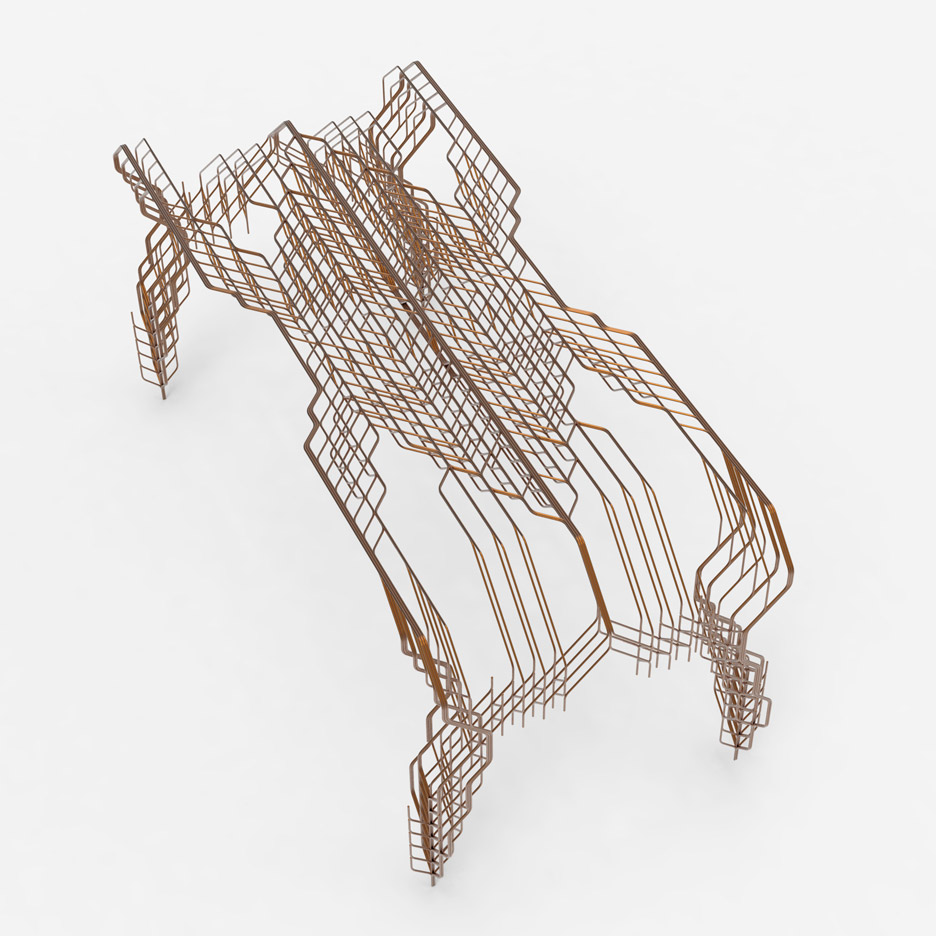
"The project tries to establish a new relationship between digital design and digital and analog fabrication techniques, developing a digital craft that goes beyond the limitation of scale and size of technologies – for example 3D printing – while still achieving objects of complexity difficult to achieve and derive from traditional fabrication techniques," said Bassing.
Under the designer's tutelage, students at the Bartlett in London have also developed alternative methods of furniture production, including a composite material that could be moulded into tubular structures without being stitched.
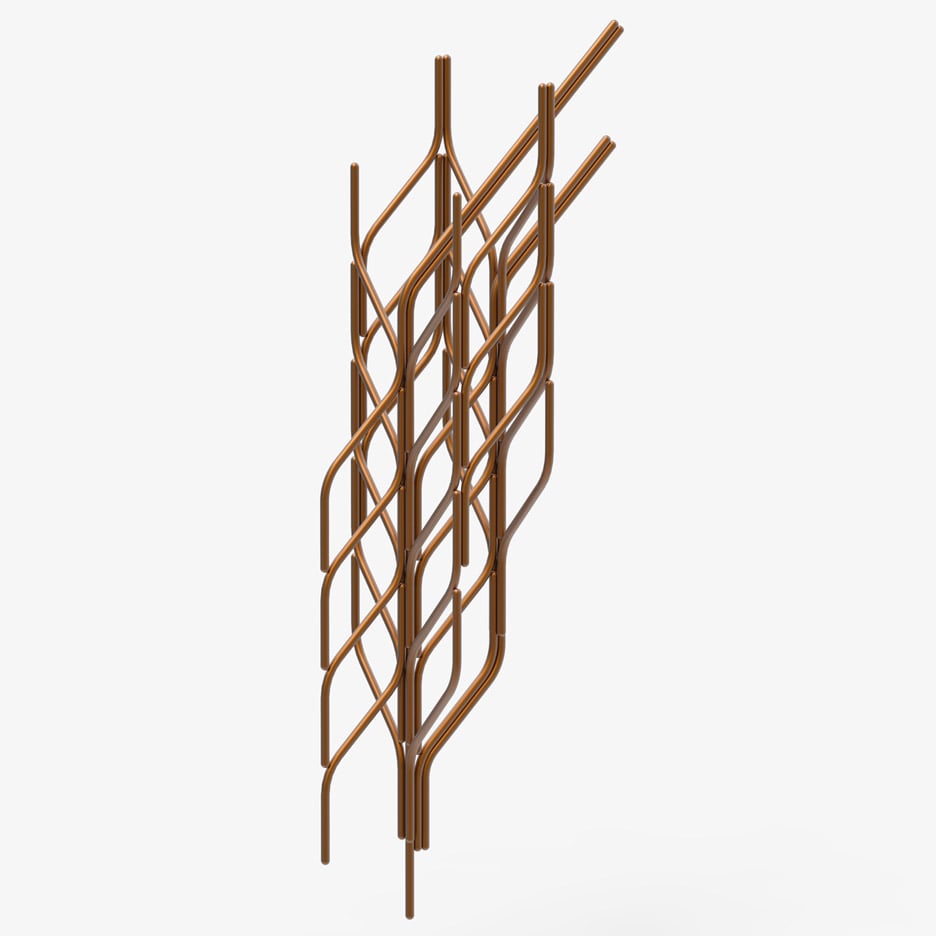
A group of his students also developed an experimental technique that would create intricate building components by wrapping sticks in fabric and using them to cast concrete.
Bassing has only used the method to produce two tables so far. He hopes to exhibit the smaller Table No 1 at this year's Design Miami/Basel fair, which takes place from 14 to 19 June 2016.
Like Dezeen on Facebook for the latest architecture, interior and design news »